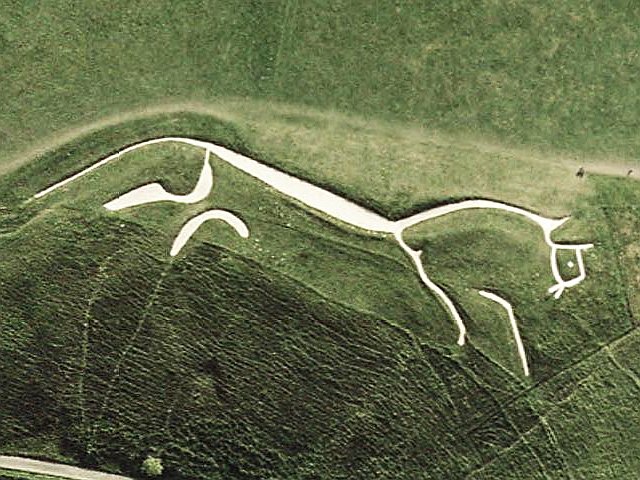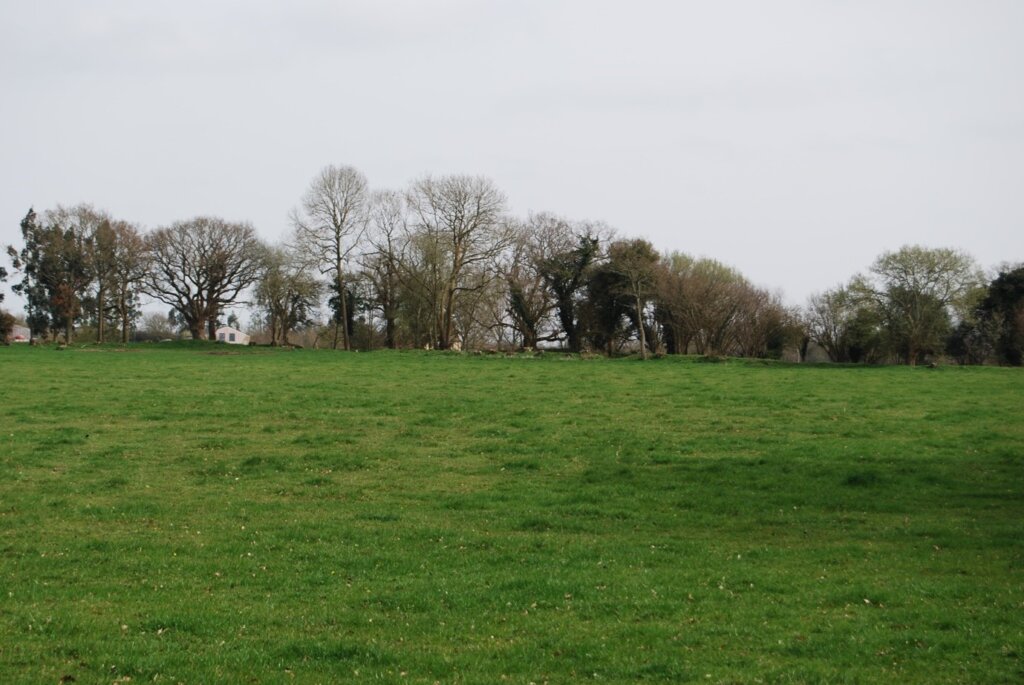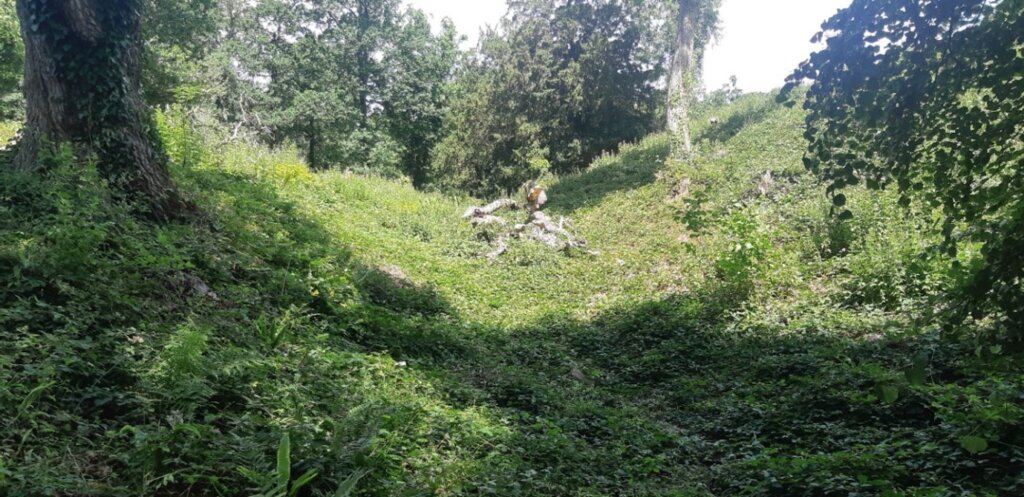Last year I posted a piece about hill forts which was inspired by Ailish Sinclair’s rather wonderful book, Sisters at the Edge of the World. The story featured a vitrified hill fort. That’s a hill fort where stonework has turned to glass, probably because of intense heat. Vitrification is definitely a real thing: the vitrification of sand under campfires may well be how glass was initially discovered. And it has certainly happened in Scotland. Ailish Sinclair has blogged about Cullykhan, near Aberdeen: a hill fort on a coastal promontory where vitrified stone has been discovered.
I was confused, because the hill forts I’ve seen look like earthen parapets with no sign of any stone. Photos of Cullykhan show no sign of walls nowadays, but excavation discloses stone walls inside the earth barriers, almost as if the stone served as a starting point for the earth walls.
Did the Scots build their hill forts differently from the English or are English forts also based on stone walls?
Hill forts are generally something of a mystery. Were they military strongpoints where Iron Age tribes retreated in times of war? Or were they defences around permanent settlements? Certainly some did feature in battles with the Romans when they invaded these islands and many are well situated for defence on natural high points with clear views. This is less obviously the case with others. Similarly, some show evidence that they were permanent settlements, while others seem to have been used only in times of unrest.
My post looked at some of the hill forts I’ve visited and I’m updating it now to include Uffington Castle, which I went to see in March.
Uffington Castle
Uffington Castle is an Iron Age hill fort that sits just above the famous White Horse In Oxfordshire.

The White Horse (NASA)
Although it’s generally referred to as an Iron Age fort, there was probably at least some sort of structure on this site from the Bronze Age, around 700 or 800 years BCE. This means that Uffington Castle and the White Horse may well date back to the same period. It’s a particularly large example of a hill fort, measuring around 220 metres by 160 metres. When I visited, I thought it was a very regular shape but those who have surveyed it describe it as D shaped. It certainly looks more like what I think of as a fort than do many of the others described below. Here’s a photo of one corner, looking just like the corner of fortifications for the next couple of thousand years.

In its heyday, the bank probably incorporated a timber palisade and may well have been faced with stones. The whole thing was surrounded by a V shaped ditch with another, outer, bank beyond it.

The ditch
It was a solid defensive structure. Excavations identify a gatehouse at the main entrance with banks extending around it to provide additional defence.
There is evidence that people lived up there. The site may have been abandoned and resettled a few hundred years later around the third century CE. It doesn’t ever seem to have been a particularly large settlement, though, so it may have been lived in mostly at times of war. Maybe that’s why it seems to have been abandoned during the Roman era, when this area had significant Romano-British settlement and benefited from the famous ‘Pax Romana’.
The British Camp
The first hill fort to make an impression on me was years ago on a visit to the Malverns. The British Camp (that’s its name) is supposed to be the largest in the country and is certainly well positioned for defence. It’s difficult to catch the scale of it in a photo, with concentric earthworks surrounding 44 acres. Here’s a view from one of the earthworks near the centre.

The British Camp dates from around 3,500 years ago but it was rapidly expanded around 400 BC. It seems to have been the site of a permanent settlement with about 4,000 inhabitants at its height.
Dinas Dinlle
This hill fort, Dinas Dinlle, in north-west Wales, is, like Cullykhan, on the coast. Part of it has been eroded by the sea. As at Cullykhan, there is evidence of stony material under some of the ramparts, but many of the features of the fort seem to have occurred naturally. Perhaps Iron Age settlers were attracted by the natural features and then steepened the slopes and built up the banks.


About a third of Dinas Dinnle has been lost to the sea
We do know something about life there because recent excavations (after our visit) have revealed a monumental stone-built roundhouse, some 13 metres in diameter with stone walls almost 2.5 metres thick. The roundhouse can’t be dated precisely but the presence of Roman pottery nearby suggests around 2,000 years ago.
Ringsbury Camp
Nearer to home is Ringsbury Camp, just north of Swindon. Our son lives in Purton and the camp is an easy walk from his house. Surrounded by woodland, it does not look particularly impressive, but is sited on a natural rise and would have made a strong defensive position.


Ringsbury did incorporate stone into its walls. The banks are made from limestone rubble, not that any of it is visible today. The stone is not local to the area, but had been transported from further afield.
Historians think that Ringsbury did not house a permanent settlement, but was a defensive position in times of unrest.
Bristol
Once you start noticing hill forts, they seem to be everywhere. On our recent trip to Bristol we were able to explore two. There used to be three in the area around the Clifton Bridge, but one has been lost with the development of the area around the western end of the bridge. One of the others is almost invisible amongst the trees on the edge of a local public park (Clifton Down). The third, Stokeleigh Camp on National Trust land above the bridge, is easy to pass by without noticing but, once spotted, is an impressive size.


Stokeleigh Camp was originally settled during the late-pre Roman period when the soil was cleared and the ground levelled. Habitation continued without a substantial break until the middle of the 1st century AD.
Conclusion
So there we are: based on the limited number of sites I’ve seen, some hill forts used stone in their construction while others did not. Some were the site of permanent settlements which may have included substantial buildings, while others seem to have been essentially defensive structures, used only in emergencies. They may be sited on high ground or on the coast or by a river, possibly guarding a ford (as in Bristol).
We seem to know very little about hill forts. As they were built in pre-Roman times they are literally prehistoric, with no written records of how they were built or used. There seems to have been a flurry of research recently, but many of the sites have not been properly excavated. Perhaps we have accepted the Roman notion that the hill forts were built by barbarians whose lives and customs were of no importance. Whatever the reason, they remain largely a mystery but they are worth looking out for.
References
Cullykhan – Canmore (National Record of the Historic Environment): https://canmore.org.uk/site/19942/cullykhan
History of British Camp: https://www.malvernbeacon.com/malvern-hills/british-camp
Buried secrets revealed at Dinas Dinlle coastal fort (2019): Current Archeology https://archaeology.co.uk/articles/news/buried-secrets-revealed-at-dinas-dinlle-coastal-fort.htm
Ringsbury Camp (Wikipedia): https://en.wikipedia.org/wiki/Ringsbury_Camp
Stokeleigh Camp (Historic England Research Records): https://www.heritagegateway.org.uk/Gateway/Results_Single.aspx?uid=198375&resourceID=19191
Uffington Castle (Historic England Research Records): https://www.heritagegateway.org.uk/Gateway/Results_Single.aspx?uid=225401&resourceID=19191
Photos are all my own, except for the satellite image credited to NASA.
